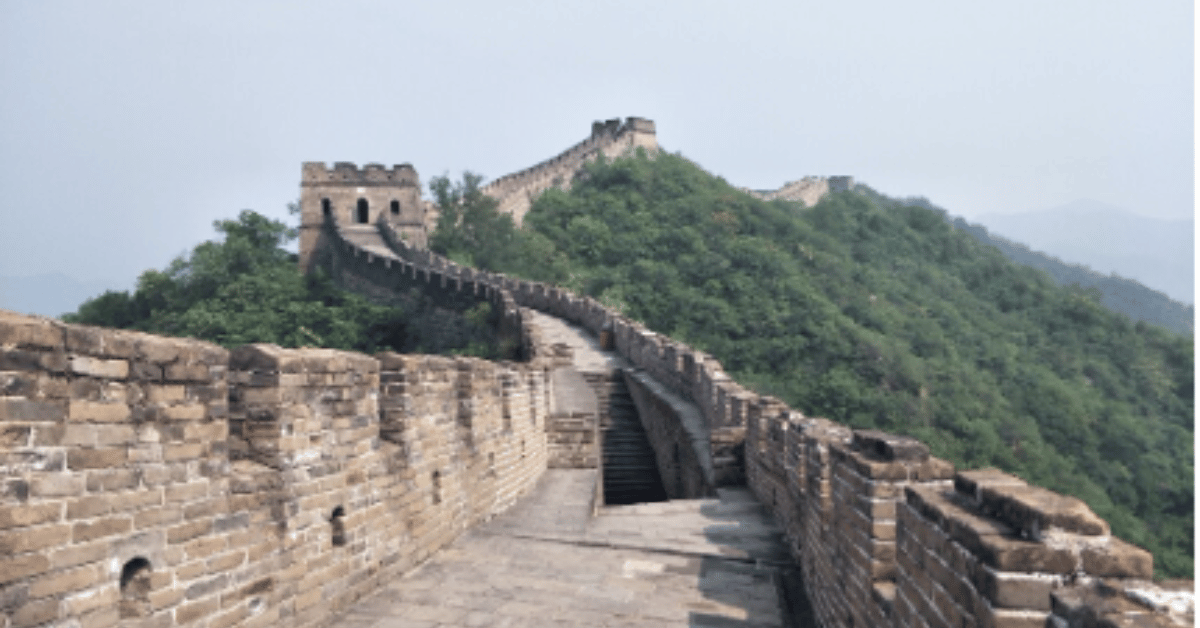The Great Wall Chinese marvel is more than just a barrier of stone; it’s a statement of endurance, identity, and ingenuity. Stretching over 13,000 miles, it is one of the most iconic structures in human history. But for those curious about its true origins, purposes, myths, and present-day role, the Great Wall Chinese narrative goes far beyond what postcards and tour brochures suggest. This article aims to explain in depth what the Great Wall really is, why it was built, who built it, and how its purpose evolved from ancient times to modern China. In the first hundred words: the Great Wall Chinese structure was primarily built for defense, but over centuries it transformed into a symbol of imperial strength, national unity, and cultural resilience. It is not just a wall but a vast system of fortifications—walls, watchtowers, beacons, and barracks—constructed and maintained by various Chinese dynasties from the 7th century BCE to the 17th century CE. Today, it stands as a monumental record of ancient engineering, sacrifice, and strategic foresight. In this article, we explore the many dimensions of the Great Wall—its geographical sweep, architectural complexity, labor legacy, folklore, and modern symbolism.
The introductory mention of the Great Wall typically conjures images of long winding battlements snaking across dusty hills under a blue sky. But its conception was born from turmoil, tribal tension, and evolving military philosophy. The earliest segments were erected by feudal states long before the unification of China under the Qin dynasty. Rather than a single initiative, the wall represents a mosaic of defensive projects spanning two millennia. Each segment reflected the engineering capabilities, materials, and strategic concerns of its time. The terrain it traverses ranges from desert expanses to lush mountain passes, making its construction as much a logistical challenge as a political and military one. Emperor Qin Shi Huang is often credited with consolidating early walls, linking them into a continuous fortification meant to repel northern invaders. Yet much of what we see today—particularly the prominent brick and stone sections—are Ming dynasty renovations, reflecting a time when the threat of Mongol incursions was dire. The Great Wall Chinese experience is therefore one of continuous adaptation.
Historical Timeline of the Great Wall’s Construction
Understanding the chronology of the Great Wall Chinese construction helps in grasping how each era contributed uniquely. Contrary to popular belief, the wall was never a single unified project but a layered accumulation of defensive strategies tailored to specific threats and terrain types. The first walls can be traced back to the Spring and Autumn Period (770–476 BCE) and the Warring States Period (475–221 BCE), where smaller kingdoms built barriers to guard against one another. After unification, Emperor Qin Shi Huang linked these sections, using forced labor to extend the wall across northern China. This unified wall marked the beginning of large-scale state-driven fortification. During the Han Dynasty (206 BCE–220 CE), the wall was further expanded westward to protect the Silk Road and ensure safe trade routes. In the centuries that followed, the wall fell into neglect during peacetime, only to be restored and rebuilt during military crises. The Tang and Song Dynasties showed less emphasis on wall-building, preferring diplomatic alliances. It wasn’t until the Ming Dynasty (1368–1644) that the wall gained its current monumental scale.
Architectural Features and Building Techniques
Architecturally, the Great Wall Chinese system is a marvel of adaptive design. Builders used locally available materials—tamped earth in the deserts, stone in the mountains, and bricks near rivers and settlements. This regional diversity gave the wall varying appearances and structural integrity based on geography. Tamped earth walls, common during early construction, involved layers of soil compacted between wooden frames. These were efficient but susceptible to erosion. During the Ming period, engineering advancements allowed the use of fired bricks, lime mortar, and more complex foundations. These segments included parapets, battlements, and drainage systems. Watchtowers were spaced at intervals to provide surveillance and communication using smoke signals by day and fire by night. Fortresses were positioned at strategic junctions to house troops and serve as command centers. The architectural evolution of the wall also responded to changing warfare technologies, such as cavalry tactics and firearms, requiring more durable structures. The deliberate alignment of the wall along ridgelines and its switchbacks across mountainous terrain show a sophisticated grasp of both defense strategy and topography.
Who Built the Great Wall and at What Cost?
Behind the grandeur of the Great Wall Chinese legacy lies a human cost that is often overshadowed by its visual impressiveness. Millions of soldiers, peasants, prisoners, and conscripts were mobilized to build various segments of the wall. The labor force was primarily composed of convicts and military personnel, often working under brutal conditions. The wall’s construction led to countless deaths, with many buried within or near the structure itself—giving rise to the phrase “The Longest Cemetery on Earth.” Estimates of labor vary, but some suggest as many as one million lives were lost throughout its construction history. Life on the wall was equally harsh for stationed soldiers. Isolated outposts meant limited supplies, harsh winters, and constant vigilance. Yet, despite the suffering, the wall also offered employment and purpose for many during unstable periods. It became a symbol of national service, however involuntary. The Great Wall, then, is not just a feat of engineering, but a testament to human endurance and sacrifice. “A civilization is measured not by its monuments, but by the lives entombed within them,” as one Chinese scholar aptly noted.
Table 1: Key Dynasties and Contributions to the Great Wall
| Dynasty | Years Active | Contribution to the Wall | Notable Materials Used |
|---|---|---|---|
| Qin | 221–206 BCE | Unified early wall sections | Rammed earth |
| Han | 206 BCE–220 CE | Extended west for Silk Road protection | Earth, reeds, gravel |
| Northern Wei | 386–534 CE | Repaired and extended sections | Mud bricks, stone |
| Sui | 581–618 CE | Limited restorations | Mixed materials |
| Tang | 618–907 CE | Focused on diplomacy, not much wall building | Minor fortifications |
| Ming | 1368–1644 CE | Rebuilt most visible sections today | Bricks, stone, lime mortar |
Geopolitical Purpose and Military Strategy
The Great Wall Chinese presence was not merely defensive but also geopolitical. It delineated territory, signaled imperial strength, and established psychological deterrence. The wall’s design allowed for rapid communication across vast distances using signal towers, enabling dynastic leaders to respond quickly to threats. Its construction often forced nomadic tribes to reorient trade routes or negotiate diplomatically. Contrary to the simplistic narrative that the wall kept out invaders, history shows mixed effectiveness. The Mongols, for instance, breached or bypassed it during the Yuan Dynasty, and the Manchus eventually penetrated its defenses, leading to the Qing takeover. However, the wall’s psychological power as a show of imperial might was unparalleled. It conveyed a message: “We are here. We will defend.” It was also instrumental in organizing border economies. Garrison towns sprouted around the wall, developing into economic hubs through trade, farming, and metallurgy. This dual purpose—military and economic—illustrates the strategic foresight behind its construction and its evolving role beyond mere defense.
Cultural Symbolism and National Identity
Beyond bricks and stone, the Great Wall Chinese symbolism has deeply permeated literature, art, and politics. For centuries, poets have likened it to the spirit of the Chinese people—enduring, protective, and impenetrable. In the 20th century, Mao Zedong declared, “Until you reach the Great Wall, you are not a true man,” encapsulating its importance in national identity. It became a rite of passage, a pilgrimage for patriots and travelers alike. In folk tales, the wall is both a protector and a source of sorrow, such as the famous legend of Meng Jiangnu, whose tears brought down a section of the wall when her husband died during construction. The wall also appears in calligraphy, cinema, and national propaganda. Its silhouette is instantly recognizable, an architectural metaphor for unity in the face of adversity. As globalization reshapes cultural narratives, the Great Wall continues to anchor China’s self-image, standing as a paradox—both a barrier and a bridge.
Table 2: Myth vs. Reality – Common Misconceptions
| Popular Belief | Reality |
|---|---|
| The Wall is a single continuous line | It’s fragmented with disconnected segments |
| Visible from the moon | Proven false; not visible without aid |
| Built entirely by Qin Dynasty | Many dynasties built, rebuilt, and extended it |
| Always effective in defense | Often breached or circumvented |
| Made only of stone | Used earth, wood, bricks, straw, reeds |
Tourism, Preservation, and Modern Challenges
Tourism has both elevated and endangered the Great Wall Chinese legacy. With millions visiting each year, especially popular spots like Badaling and Mutianyu, the wall faces environmental degradation, vandalism, and commercialization. Local governments often struggle to balance revenue with preservation. In less-maintained areas, locals have sometimes used stones from the wall for building homes or roads. Despite being a UNESCO World Heritage site, only a fraction of the wall is well-preserved. Initiatives are underway to document and digitally map the entire structure, using drones and satellite imaging. Conservationists face challenges in funding, accessibility, and environmental erosion. However, global awareness is growing, leading to international partnerships in cultural preservation. Modern sections have added interpretive centers and augmented reality tours. Yet, critics warn against turning the Great Wall into a theme park stripped of historical depth. The task today is to preserve not just the wall’s physical presence, but its philosophical and historical context as a symbol of human will and historical continuity.
Conclusion: The Wall as a Mirror of Civilizations
The Great Wall Chinese monument remains one of humanity’s most enduring legacies—not merely for its scale, but for what it reveals about our shared history. It embodies the paradoxes of civilization: unity and division, triumph and tragedy, permanence and erosion. Across empires, generations, and ideologies, the wall has stood witness to both conquest and resilience. As one historian noted, “To study the Great Wall is to study the psyche of ancient China—its fears, its hopes, its will to endure.” In today’s interconnected world, its symbolism continues to evolve. It now serves as a reminder not just of past struggles, but of the need to bridge divides, not merely build them. Whether one stands atop its ramparts gazing into distant hills or studies its blueprints in an archive, the Great Wall Chinese legacy offers more than stones—it offers perspective. As modern China rises, the shadow of the wall stretches far beyond geography. It stretches into memory, myth, and the architecture of the human story.
FAQs
1. What was the original purpose of the Great Wall Chinese structure?
The primary purpose was defense against northern nomadic invasions, but it also served as a border control, trade regulation, and communication system.
2. Is the Great Wall visible from the moon?
No, the claim is a myth. Astronauts have confirmed that it’s not visible to the naked eye from the moon.
3. How long is the Great Wall of China?
The total length, including all branches, is approximately 21,196 kilometers (13,171 miles), as measured by modern surveys.
4. Who built the Great Wall of China?
It was built by soldiers, forced laborers, and prisoners under various dynasties—primarily the Qin, Han, and Ming.
5. Why are there so many different sections of the wall?
Because different dynasties built and rebuilt parts over centuries using varying materials and strategies based on local geography.











